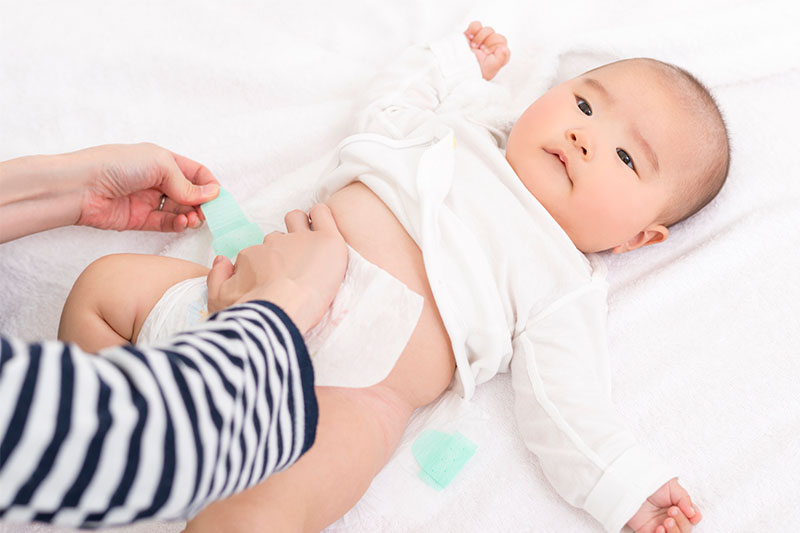Families For Life | Diaper Duty

Putting on baby's diaper for the first time is a rite of passage for all parents. It is a simple thing to do but it is done with great love and tenderness. As a parent, you look your child in the eye, talk gently about your actions, coo and nuzzle the infant, all while performing expert clean-up.
Diapers, like milk bottles and toys, are a vital part of the parenting journey. At the very least, children stay in diapers for the first two years of life. Assess how many diapers your child goes through in a day. Do some calculating and gosh... that is a whole lot of diapers you'll be needing!
Getting started
To make diapering smooth for you and your child, place all diapering supplies together within reach. A shelf, small table or basket will be ideal for this. Items you will need include a changing mat, alcohol-free and unscented wet wipes, cotton balls, a container of lukewarm water, diaper cream, and of course, baby diapers.
Before you execute a diaper change, wash your hands and make sure you have everything you need ready. Never leave your child alone or turn away distracted, even for a second. Babies have been known to roll off the bed or changing table.
Keep it clean
How to clean your child during a diaper change depends on how much there is to clean. Lift your child's legs slightly - by the ankles - and gently clean your child’s bottom with wet wipes.
To clean up after a poo, wet cotton balls in water, squeeze out excess water and delicately wipe your child's bottom with them. Follow through with wet wipes. If your child has sensitive skin, cotton balls are a good alternative to wet wipes.
Always clean from front to back, especially for girls. Do not clean from back to front as this could spread bacteria and trigger urinary tract infections. When cleaning boys, place a clean diaper over the penis because exposure to air can encourage urination, sending an unexpected shower your way.
Once your child is clean and dry, apply diaper cream, open a new diaper, and slide it under your child's buttocks. Fold the front part of the diaper between your child's legs and secure both sides with the diaper tabs. Make sure the tabs are not fastened too tightly.
Bag and dispose soiled diapers responsibly. Wash your hands thoroughly after each change to prevent the spread of germs. Disinfect the diapering area with each diaper change.
Diaper rash
If you notice red or pink bumps on your child's diaper area, it is probably diaper rash caused by irritants like stool, urine and bacteria.
To prevent and treat diaper rash, apply diaper cream after each diaper change. Diaper cream should contain zinc oxide. Apply evenly on the affected area and in between the creases by the legs. The cream serves as a barrier against moisture which is encouragement for further itch and inflammation. Another way to prevent rash is to keep your baby clean and dry by changing diapers frequently. You can also air out your child's skin by going diaper free for short periods of time each day.
Disposable vs. cloth diaper
For convenience and ease of use, nothing beats disposable diapers, though there is still debate as to whether reusable cloth diapers are more environmentally friendly than disposables.
Cloth diapers require washing and preferably with hot water. Diapering your child while on the move may be tough to manage, especially if diaper change is frequent. You will also have to bag soiled diapers and bring them home for wash.
Incidentally, cloth diapers have come a long way. Modern versions feature fuss-free Velcro buttons and snaps, replacing the conventional safety pin.
Pull-up diapers
To prepare your child for toilet training, switch to pull-up diapers (also known as ‘training pants’). Its elastic waist, underwear-like design, and absorbency, allow children to easily adjust themselves during wear, easing them into the potty-training stage, which usually happens between the ages of two to three.
Remember not to pressure your child. Be patient because toilet training takes time and depends largely on your child's readiness.
Explore more
- Changing a cloth diaper: in pictures
- Changing a disposable diaper: in pictures
- Making diaper time fun (0-2 years)
Contributed by:
Early Childhood Development Agency